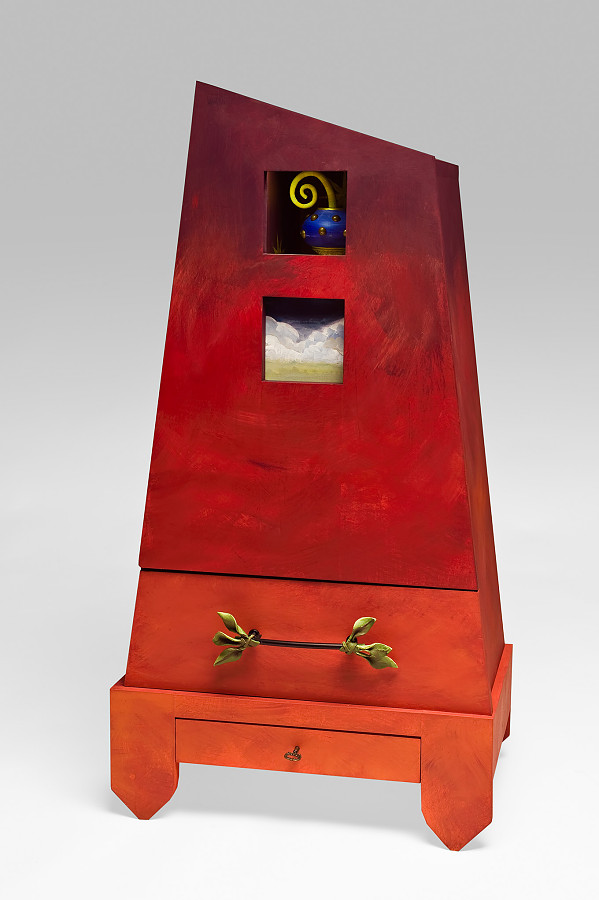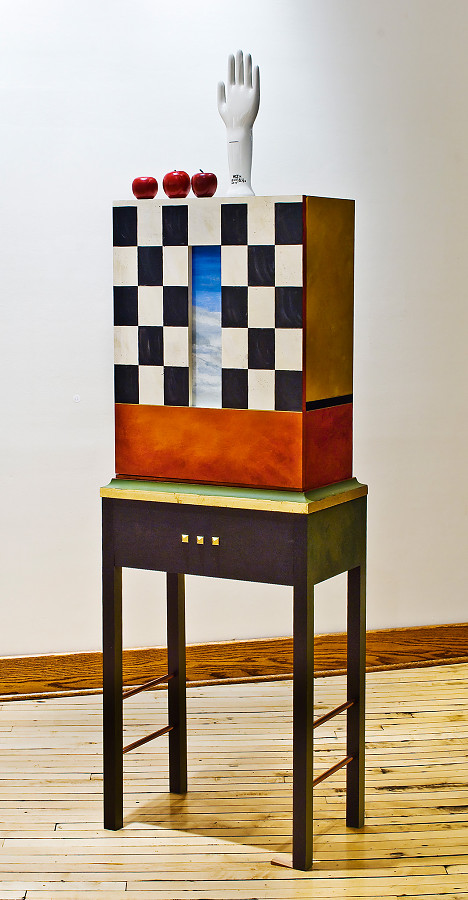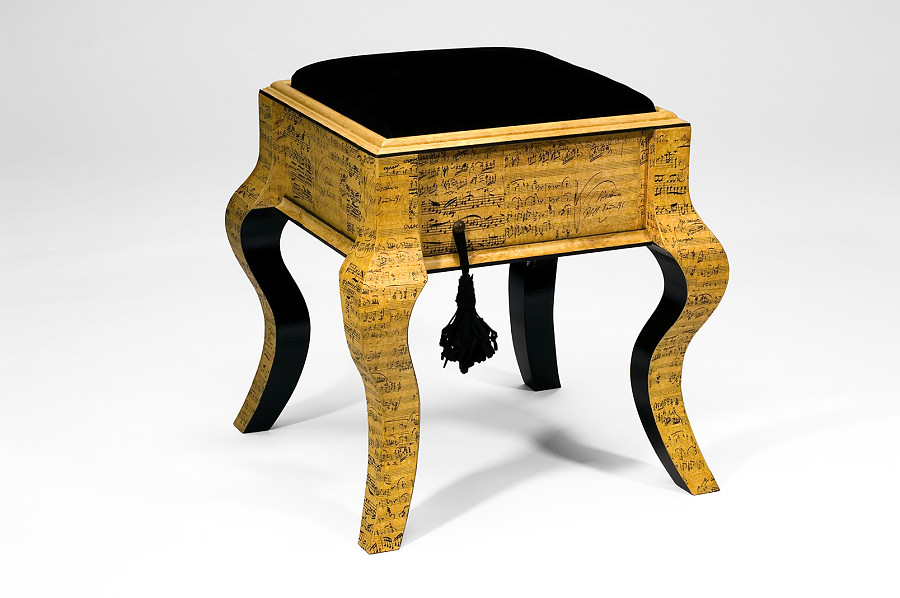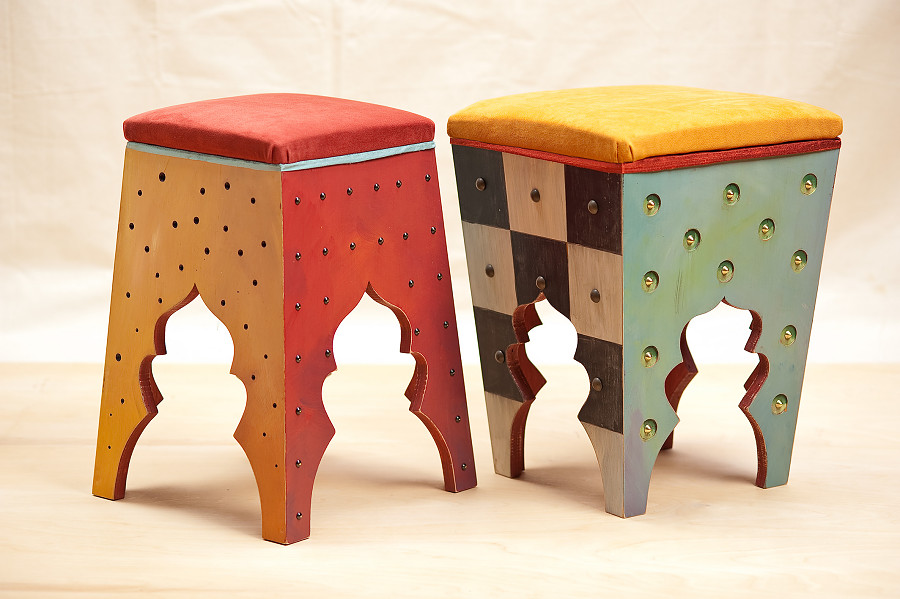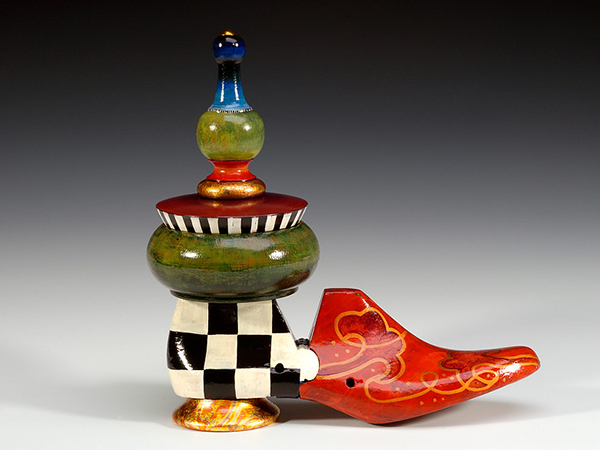
Meg Romero says she has “always loved to build things.” She spent much of her television-less childhood in the 1970s poring over the 1937 Popular Science book The Cyclopedia of Things to Make, made “the famous three-plank bench” when she was 16 or 17, and was a member of the 1977 seventh grade class which offered, for the first time in her district, woodshop to girls and sewing to boys. (In the class, she made a napkin holder that’s still in use.)
She’s also always been a lover of furniture. “I love the way it feels, the way it smells, the lines on it.” When her friends were saving their allowances to buy music albums, she spent hers at antique stores on chairs that she stained and reupholstered.
She wasn’t a furniture maker herself right away, though. Instead, she went to art school and then spent 12 years as a residential interior designer. An apartment dweller at the time, she said, “I was doing some sewing, but there was no woodworking going on at that point.”
Circumstances changed, though, when one of the interior design clients became her husband. Meg and Dave Romero spent a year traveling the world, while she was thinking about what she would want to do. “It always came back to making furniture,” she said. At the conclusion of the year, instead of commuting an hour each way to work in retail – including nights, weekends and holidays – Meg and Dave returned to an historic building in Cumberland, Maryland, where her studio and woodshop is on the second floor and his (Dave is a professional photographer) is on the third. Part of the building’s character is its 1930s elevator – which is one inch too small to carry a 4×8 piece of lumber.
Meg adds character to her furniture, too, with the inspiration for some of her pieces coming from something that had originally occurred as a mistake. With her Inspired Conversation cabinets, for instance, she said, “I was in the shop cutting the two sides of the cabinet, and I did not want to cut 6 inches off the long side.” The answer to “what to do” with that piece, instead of throwing it away, was to add it to the top of the cabinet as an arch, with a corresponding arc on the bottom of the cabinet – which then created the problem that the cabinet would not stand up. Meg solved this by creating the cabinet as a wall-mounted piece, with the illusion of being supported by legs created from repurposed axe handles, painted in stripes, which end in feet created from antique shoe lasts.
She incorporates such materials into many of her pieces, saying that it’s fun and challenging to use items like, for example, sheet music, leather, a pool cue or other items from antique stores. “I like the problem-solving,” Meg said. For instance, her piece Teacher’s Pet came about in part from an antique glove form she found on eBay. She put it on top of a cabinet, “with the idea of the traditional finial, but something unique.” When her husband saw the “hand raised,” he commented, “Teacher’s Pet” — “at which point,” Meg said, “I lined up apples on the side of it.”
Meg says she’ll often start with research material on the history of furniture styles before she builds a piece, then move on to reading about the construction techniques. Her practical education in the mechanics of woodworking came from such self-education: “I read a lot of books, ask a lot of questions, watch videos, spend time with woodworkers in the shop just watching them.” Next on her list of learning is understanding how to make a fine dovetailed drawer with her Leigh dovetail jig, a tool she owns but hasn’t dedicated much time to. Instead, she notes that at this point, one of her most appreciated tools is her panel saw, “since I work alone.”
She does, however, involve herself in the community by encouraging children to make things and get involved with wood. “If I won the lottery, there’s a lot I’d do, and one would be hooking craftspeople up with kids,” she said. For now, Meg encourages student visits to her studio and provides children in her life with paper shopping bags full of scraps from her work. “I used to sand them, and then I thought, ‘I want them to learn.’ Now I throw sandpaper in there, and show them how to do it,” she said.
This re-use of her wood scraps also plays into another of Meg’s priorities: reducing waste. Partly it may be about the environment, she said, but mostly, “it’s because I hate schlepping it out to the curb.” In fact, one of the most important criteria when designing her Ebb and Flo small tables was to have as little waste as possible.
Those tables, like most of Meg’s work, are painted – one reason her woods of choice at this point are poplar, which lends itself well to paint, and birch plywood. Still, she said of her furniture building, “What’s most exciting to me is before finishing, when a piece is glued and clamped and ready to be painted. It’s full of wonder and potential, just sitting there on the table.
“My father always used to tell me, ‘I don’t care what you do, as long as every day is a box of crackerjacks.’ When I talk to him now, I tell him about the crackerjack stuff: you never know what the day is going to unfold. It keeps it exciting.”
